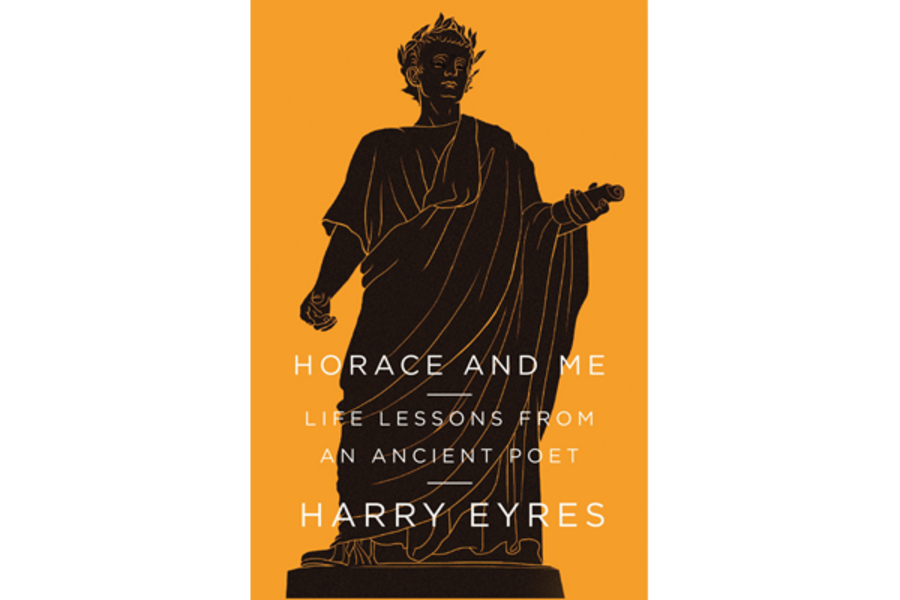Horace and Me
Loading...
Poor Horace. He's gotten a bad rap lately, if he's gotten any rap at all. Very few people study Latin these days. Those who do may translate a little Virgil, a smidgen of Catullus, perhaps a dash of Ovid. In the scant classical education doled out even to high school Latinists, Horace often gets left out. Yet, as Harry Eyres notes in Horace and Me, his sweetly meandering reexamination of Horace's virtues, Horace conversely also suffers from having been perhaps too familiar for so long.
Horace, long a staple of the classical education, made his way into the ears of Marvell and Shakespeare and Arnold and Hardy and was echoed by them (whether or not we now recognize the echoes). He's also the author of a few stock Latin phrases we might not even identify as Horatian. "Dulce et decorum est pro patria mori" ("sweet and fitting it is to die for one's country") was used sarcastically by Wilfred Owen to skewer the kind of patriotism that led to mass deaths in the trenches of World War I; "Carpe diem" ("Seize the day") became the Robin Williams character's rallying cry in "Dead Poets Society." Beyond these phrases, however, the poet who wrote these lines may seem just "dead."
Not so, argues Eyres, who wants us each to consider making friends with Horace and absorbing his particular kinds of wisdom. Virgil wrote the epic "Aeneid" and a few wonderful poems about farm and village life, called the "Georgics" and the "Eclogues"; Catullus wrote wild, sometimes mordant poems about love; Ovid made satirical political commentary in sexy retellings of myths.
But what did Horace do? Well, says Eyres, Horace wrote about small things, about home, about wine, about friendship, and about love. But perhaps more than any of these other poets, he focused on crafting a lyric that could reflect the human scale of life, the human voice – a kind of voice and scale that might be useful to us in the busy world today.
Eyres should know. In addition to being a poet and the poetry editor of the Financial Times, he is a proponent of slow living, of finding those spaces in each life that cannot be monetized. Horace, he says, can speak across 2,000 years and teach us a little bit about the meandering ways of pleasure and friendship. For Eyres, Horace's lyric not only reflects our sense of being human but in some ways creates a space in which we learn how to be human at all.
This book is mostly dulce. It's the book of a person trying to unpack how an old text in another language can become a friend and guide. Nevertheless, a few things about this book occasionally rankled: In his urge to show us that Horace is relevant, Eyres is sometimes overly eager to forge a one-to-one connection between Horace's Rome and our complicated current imperium, or literal connections between Horace and himself. In his translations of Horace, Eyres liked to insert contemporary terms to modernize and contextualize ancient ones – inserting words like "SUV" or "Barolo" to help steer the current reader into seeing how, exactly, Horace might be modernized. Sometimes the translations fall flat. The Horatian neologisms shed light, but often, to my ear, they also felt a bit proscriptive, as if we were hearing too much of Eyres's world and not enough of Horace's. Like the kinds of comparisons that are made by good poetry, Eyres's formulations work best when they are more slippery, more open-ended, more mysterious.
And indeed, how can poetry, especially lyric poetry, work to sustain us? How does the frame of the lyric not only represent our feelings of being human but create our humanity in the first place? How does the voice enchant us enough to remind us of our own innerness? How is it possible to be friends with a poet who died 2,000 years ago? These are open-ended and mysterious questions. Eyres's reminder that Horace might help me answer them was welcome. I left this book ready to make a new – if indeed, rather rare and old – literary friend.








